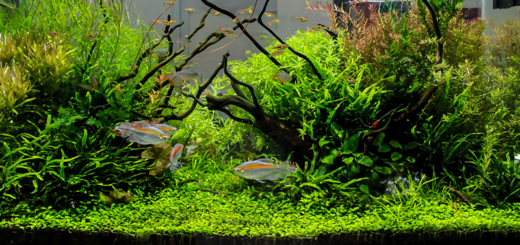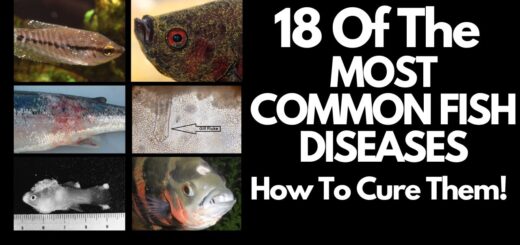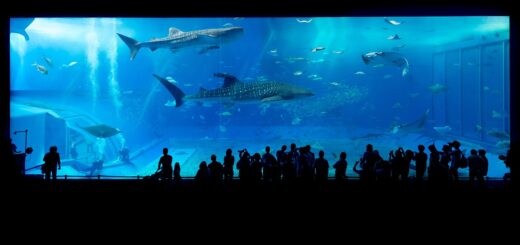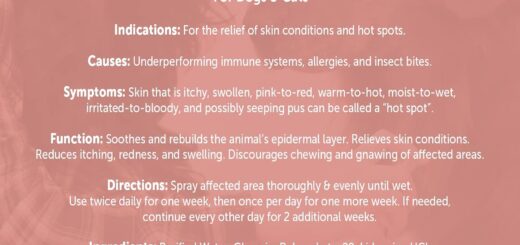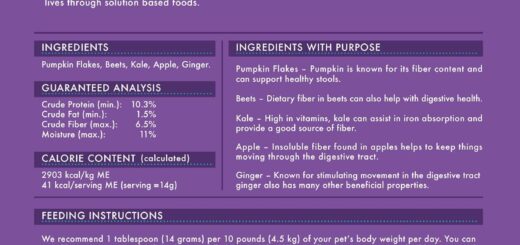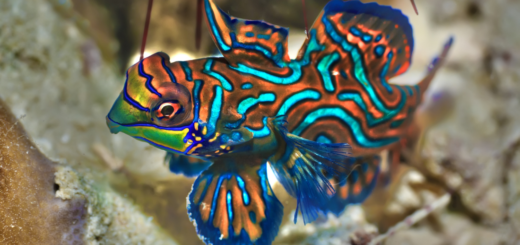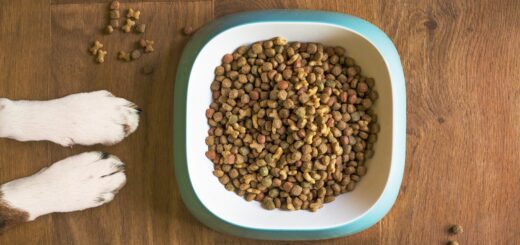Tank Cycling: Establishing A Stable Environment For Your Fish
In order to create a healthy and thriving environment for your fish, it is essential to understand the process of tank cycling. Tank cycling involves establishing a stable and balanced ecosystem within your aquarium, ensuring that the water quality is optimal for your fish to thrive. This article will guide you through the key steps of tank cycling, including selecting the right bacteria, monitoring ammonia and nitrate levels, and implementing regular maintenance routines to keep your fish happy and healthy. With a properly cycled tank, you can provide the perfect habitat for your fish to flourish.
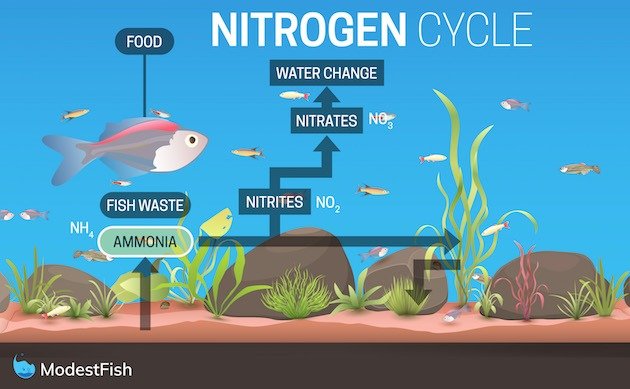
This image is property of modestfish.b-cdn.net.
Click here…Your Spirit Animal is Trying to Connect…
1. Understanding Tank Cycling
1.1 What is Tank Cycling?
Tank cycling is the process of establishing a stable and healthy environment in your fish tank before introducing any fish. It involves creating a balanced ecosystem where beneficial bacteria can thrive and convert harmful substances into less toxic ones. This process is crucial for the long-term health and well-being of your aquatic pets.
1.2 The Importance of Tank Cycling
Tank cycling is vital because it helps establish a stable nitrogen cycle within your aquarium. The nitrogen cycle is the natural process through which toxic ammonia, produced by fish waste and decaying organic matter, is converted into less harmful nitrite and then further broken down into nitrate. Without a properly cycled tank, the accumulation of ammonia and nitrite can be lethal to your fish.
1.3 The Three Stages of Tank Cycling
Tank cycling consists of three stages: the establishment of ammonia, the conversion of ammonia to nitrite, and the conversion of nitrite to nitrate. Each stage requires the presence of specific groups of beneficial bacteria that facilitate the conversion process. Understanding these stages is crucial for successfully cycling your tank and ensuring a healthy environment for your fish.
2. Preparing for Tank Cycling
2.1 Selecting the Right Tank
When choosing a tank for cycling, consider the size and shape that best suits your needs. A larger tank generally creates a more stable environment and provides a larger surface area for beneficial bacteria to colonize. It’s also essential to select a tank that suits the type of fish you plan to keep, taking into account their adult size and specific environmental requirements.
2.2 Setting up the Tank
Before starting the cycling process, it’s crucial to properly set up the tank. Start by thoroughly rinsing the tank and adding a substrate of your choice. Next, install the filtration system, heater, and any decorations or plants you desire. Fill the tank with dechlorinated water, ensuring it reaches the appropriate temperature and pH level for your fish. Finally, let the tank run for a minimum of 24 hours to ensure stable conditions before beginning the cycling process.
2.3 Choosing the Right Cycling Method
There are two main methods for cycling a tank: fishless cycling and fish-in cycling. Fishless cycling involves using a source of ammonia, such as pure ammonia or fish food, to kickstart the nitrogen cycle without introducing live fish. On the other hand, fish-in cycling involves adding a small number of hardy fish to the tank during the cycling process. The choice of method depends on personal preference and the availability of fish.
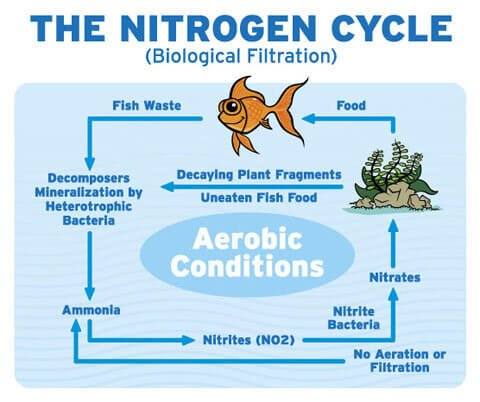
This image is property of www.algone.com.
Click here…Your Spirit Animal is Trying to Connect…
3. The Nitrogen Cycle
3.1 The Nitrogen Cycle Explained
The nitrogen cycle is a series of biological processes that occur in your aquarium, ensuring the decomposition of waste products. Initially, beneficial bacteria called ammonia-oxidizing bacteria convert toxic ammonia produced by fish waste and decaying matter into nitrite. Another group of bacteria, called nitrite-oxidizing bacteria, then convert nitrite into nitrate, which is relatively less harmful to fish.
3.2 Beneficial Bacteria and Ammonia
Beneficial bacteria play a vital role in the nitrogen cycle by converting toxic compounds. Ammonia-oxidizing bacteria (AOB) are responsible for converting ammonia into nitrite, while nitrite-oxidizing bacteria (NOB) convert nitrite into nitrate. The key to a successful tank cycle is allowing these bacteria to establish themselves and form a healthy colony.
3.3 Nitrite and Nitrate Levels
During the tank cycling process, it’s important to monitor the levels of nitrite and nitrate. Initially, you may observe a spike in nitrite levels as the beneficial bacteria responsible for converting ammonia establish themselves. However, as the cycle progresses, nitrite levels should decrease. Once the cycle is complete, nitrate levels should stabilize and be ideally kept below 40 parts per million (ppm) to maintain a healthy environment for your fish.
4. Fishless Cycling
4.1 What is Fishless Cycling?
Fishless cycling is a method of establishing a healthy nitrogen cycle within your aquarium without the use of live fish. This method involves introducing a source of ammonia, either in the form of pure ammonia or decaying fish food, to simulate the waste produced by fish. By monitoring ammonia, nitrite, and nitrate levels, you can determine when the tank is fully cycled and ready for fish.
4.2 Steps to Perform Fishless Cycling
To perform fishless cycling, you’ll need to introduce a source of ammonia to kickstart the nitrogen cycle. This can be done by adding a small amount of pure ammonia or by placing a small quantity of fish food in the tank, allowing it to decompose and release ammonia. Regularly test the water parameters, including ammonia, nitrite, and nitrate levels, and monitor how they change over time. As the cycle progresses, you’ll observe a decline in ammonia and nitrite levels.
4.3 Monitoring Ammonia, Nitrite, and Nitrate Levels
During the fishless cycling process, it’s crucial to monitor the levels of ammonia, nitrite, and nitrate regularly. Initially, you can expect a rise in ammonia levels, followed by an increase in nitrite. As the beneficial bacteria colonies develop, these levels will gradually decline. Once both ammonia and nitrite levels read zero, and nitrate levels stabilize, your tank is fully cycled and ready for fish.
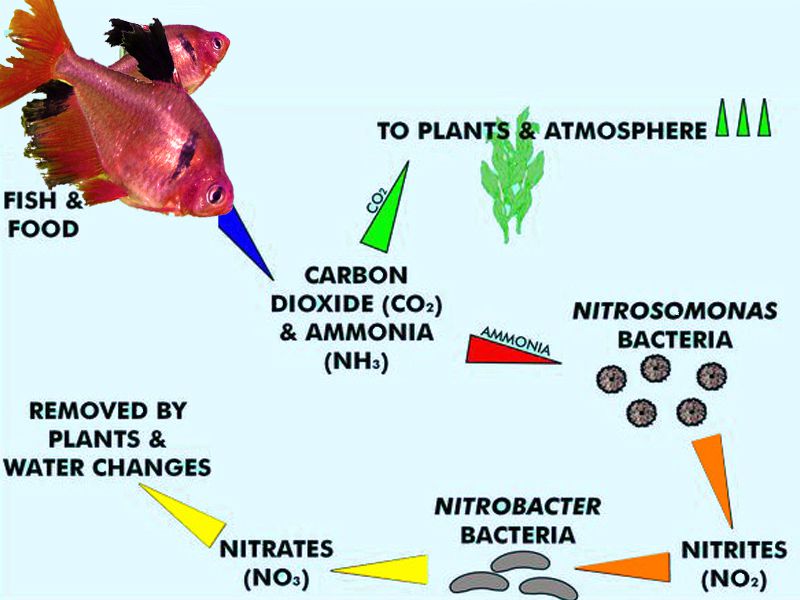
This image is property of www.thesprucepets.com.
5. Fish-In Cycling
5.1 The Fish-In Cycling Method
Fish-in cycling involves introducing a small number of hardy fish to the tank during the cycling process. While this method can be faster, it carries more risks and requires careful monitoring of water parameters to ensure the well-being of the fish. It’s important to choose fish species that are known to be hardy and tolerate the potentially unstable conditions during the cycling process.
5.2 Selecting Hardy Fish for Cycling
When opting for the fish-in cycling method, it’s crucial to select fish species that are known to be resilient and can tolerate the changing water conditions during the cycling process. Hardy fish, such as certain species of danios, tetras, or guppies, are typically recommended for fish-in cycling. It’s important to avoid fish that are sensitive to water quality fluctuations or species that may produce excessive waste and add stress to the tank.
5.3 Monitoring Water Parameters
During fish-in cycling, closely monitor ammonia, nitrite, and nitrate levels to ensure the fish’s health and well-being. Test the water regularly, especially in the first few weeks, as ammonia and nitrite levels may temporarily spike due to the fish’s waste. It’s important to perform frequent water changes to maintain optimal water quality and minimize the risk of ammonia or nitrite poisoning.
6. Testing Water Parameters
6.1 Importance of Testing Water Parameters
Regularly testing water parameters is essential for maintaining a healthy and stable environment in your fish tank. By monitoring levels of ammonia, nitrite, nitrate, pH, and temperature, you can detect any imbalances or potential issues before they become harmful to your fish. Timely testing allows you to make necessary adjustments and ensure a thriving ecosystem.
6.2 Equipment for Testing Water Parameters
To accurately test water parameters, you’ll need a few essential tools. A master test kit that includes tests for ammonia, nitrite, nitrate, pH, and possibly other parameters is highly recommended. Additionally, a thermometer is essential for monitoring water temperature. Invest in quality testing equipment to obtain accurate and reliable results for the well-being of your fish.
6.3 Monitoring Ammonia, Nitrite, and Nitrate Levels
Ammonia, nitrite, and nitrate levels are crucial indicators of the tank’s cycling progress and water quality. Test these parameters regularly, especially during the cycling process. Initially, you may observe elevated levels of ammonia and nitrite as the beneficial bacteria colonies establish themselves. However, as the cycle progresses, these levels should decrease. Keep ammonia and nitrite levels as close to zero as possible, and maintain nitrate levels within an acceptable range to ensure a healthy and stable environment for your fish.
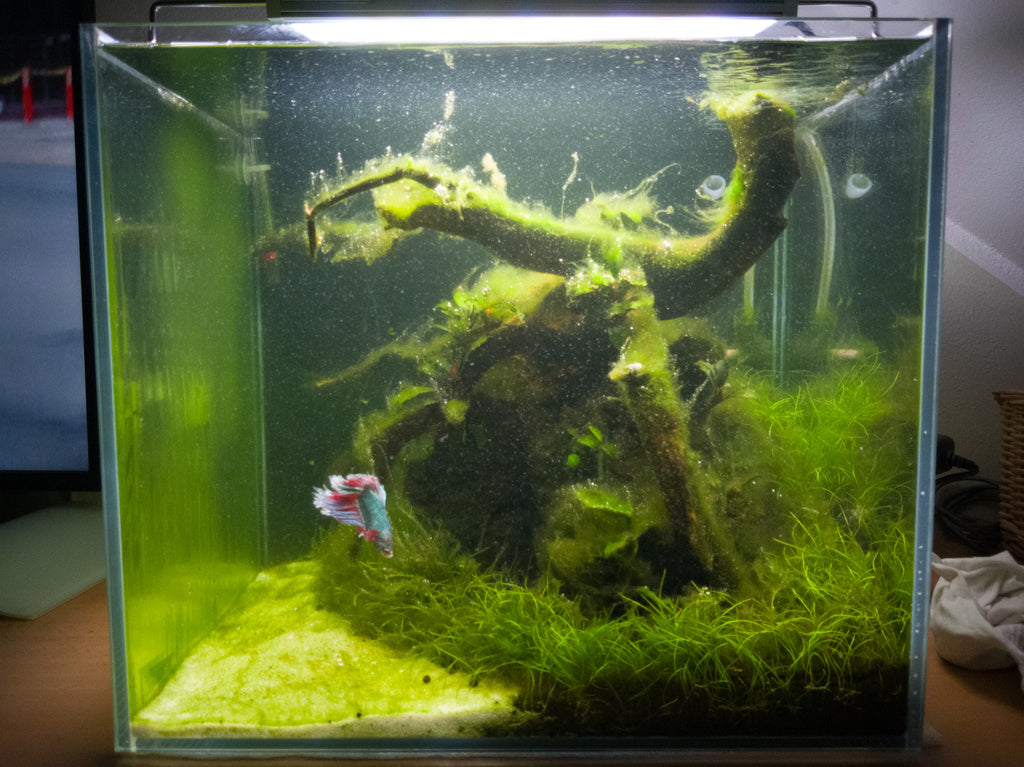
This image is property of cdn.shopify.com.
7. Maintaining Water Quality
7.1 Regular Water Changes
Regular water changes are vital for maintaining water quality and minimizing the accumulation of harmful substances in your tank. Aim to change approximately 20% of the tank water every one to two weeks. This helps remove excess nutrients, maintain stable water parameters, and promote the health and well-being of your fish.
7.2 Cleaning and Maintaining the Filter
Proper maintenance of your filtration system is essential for optimal water quality. Regularly clean the filter media, removing any debris or waste that may accumulate. However, avoid completely replacing all filter media at once, as it contains beneficial bacteria essential for the nitrogen cycle. Instead, rinse the media in tank water to preserve the beneficial bacteria colonies.
7.3 Avoiding Overfeeding
Overfeeding is a common mistake that negatively impacts water quality in fish tanks. Uneaten food and fish waste contribute to ammonia and nitrite levels. Feed your fish in moderation and remove any excess food after a few minutes to prevent excessive waste accumulation. By practicing proper feeding habits, you can maintain better water quality and prevent potential issues.
8. Troubleshooting Common Issues
8.1 High Ammonia Levels
High ammonia levels can be harmful to fish and indicate an imbalance in the tank. To address this issue, perform a partial water change to dilute the ammonia concentration. Additionally, check for any potential sources of ammonia, such as decaying plants or excess fish waste. Monitor feeding habits and ensure that you are not overfeeding, as excess fish food can also contribute to high ammonia levels.
8.2 High Nitrite Levels
High nitrite levels can be detrimental to fish health and indicate an incomplete or unstable nitrogen cycle. Increasing water changes can help dilute the nitrite concentration and promote its conversion into nitrate. Monitor water parameters closely, and consider using chemical additives that temporarily detoxify nitrite, such as those containing sodium thiosulfate. Address any potential sources of excess nitrite, such as overstocking or overfeeding.
8.3 High Nitrate Levels
While nitrate is less harmful than ammonia or nitrite, high levels can still negatively impact fish health. Regular water changes are vital for reducing nitrate concentrations in the tank. Additionally, consider introducing live plants to your aquarium, as they can absorb and utilize nitrate as a nutrient source. Monitoring your feeding habits and preventing excess waste production can also help control nitrate levels.
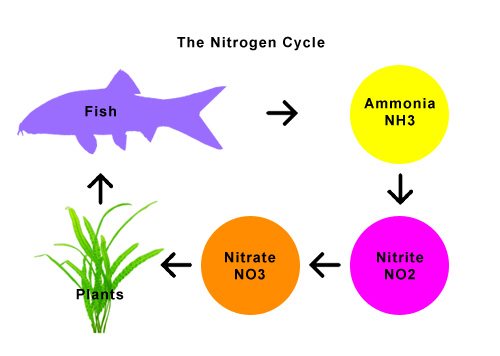
This image is property of sereneaquarium.com.au.
9. Introducing Fish to the Tank
9.1 Acclimating Fish to the Tank
When introducing fish to your tank, it’s important to acclimate them gradually to their new environment. Float the bag containing the fish in the tank for 15-30 minutes to allow the temperature to equalize. Then, open the bag and add small amounts of tank water into the bag at regular intervals. After approximately 30 minutes, gently release the fish into the tank, avoiding adding the water from the bag into the tank. This gradual acclimation process helps minimize stress and ensures a smoother transition for the fish.
9.2 Adding Fish in Small Numbers
When adding fish to your tank, do so in small numbers to avoid overwhelming the nitrogen cycle. A general rule of thumb is to add no more than 1-2 fish per week, depending on the tank’s size and filtration capacity. This gradual approach allows beneficial bacteria colonies to adjust to the increased waste production and maintain water quality.
9.3 Monitoring Fish Behavior and Health
After introducing fish to the tank, closely monitor their behavior and health. Healthy fish should exhibit active swimming, vibrant coloration, and a healthy appetite. Keep an eye out for any signs of stress, such as excessive hiding, loss of appetite, or abnormal swimming patterns. Regularly test water parameters and address any potential issues promptly to ensure the well-being of your fish.
10. The Importance of Patience
10.1 Allowing Sufficient Cycling Time
One of the most important aspects of successful tank cycling is exercising patience. The cycling process can take anywhere from a few weeks to a couple of months, depending on various factors. Rushing the process can disrupt the nitrogen cycle and negatively impact fish health. Allow sufficient time for the beneficial bacteria colonies to establish themselves and the tank to stabilize before introducing fish.
10.2 Avoiding the Temptation of Rushing the Process
While it may be tempting to add fish to your tank as soon as possible, resist the urge to rush the cycling process. A properly cycled tank provides a stable and healthy environment for fish to thrive. Rushing the process can lead to unstable water parameters, ammonia or nitrite spikes, and potential stress or harm to your fish.
10.3 Gradually Adding Fish Over Time
Even after the tank is fully cycled and stable, it’s important to gradually add new fish over time. This approach allows the biological filtration system to adjust to the increased bio-load and avoid overwhelming the nitrogen cycle. By introducing fish slowly, you give the tank’s ecosystem time to adapt and ensure the well-being of both existing and new fish.
In conclusion, understanding and implementing proper tank cycling methods are essential for establishing a stable environment for your fish. Whether you choose the fishless or fish-in cycling method, the key is to monitor water parameters closely, allow beneficial bacteria colonies to establish, and exercise patience throughout the process. By following these guidelines, you can create a thriving aquatic ecosystem that ensures the health and well-being of your fish for years to come.


